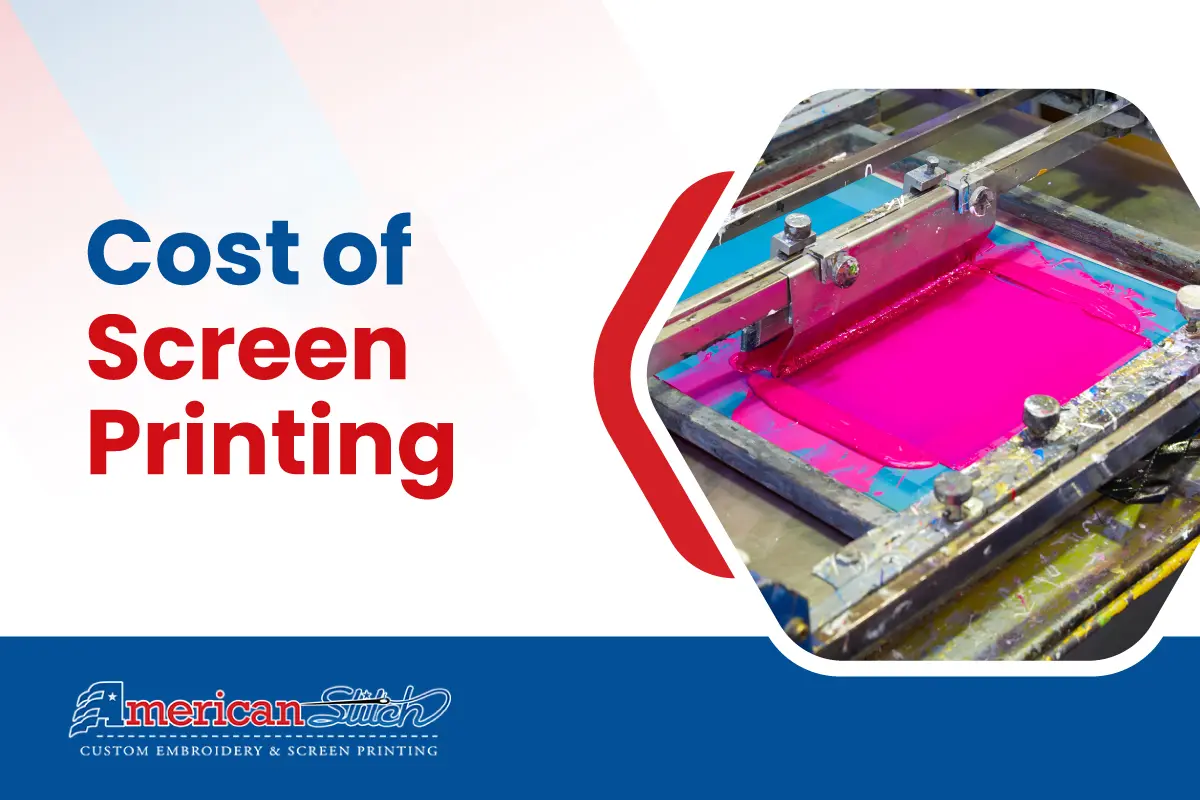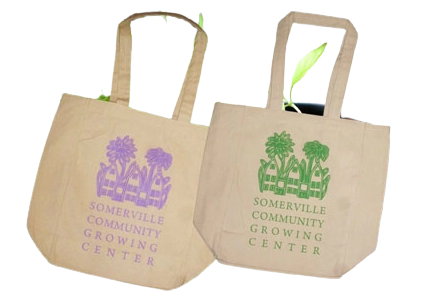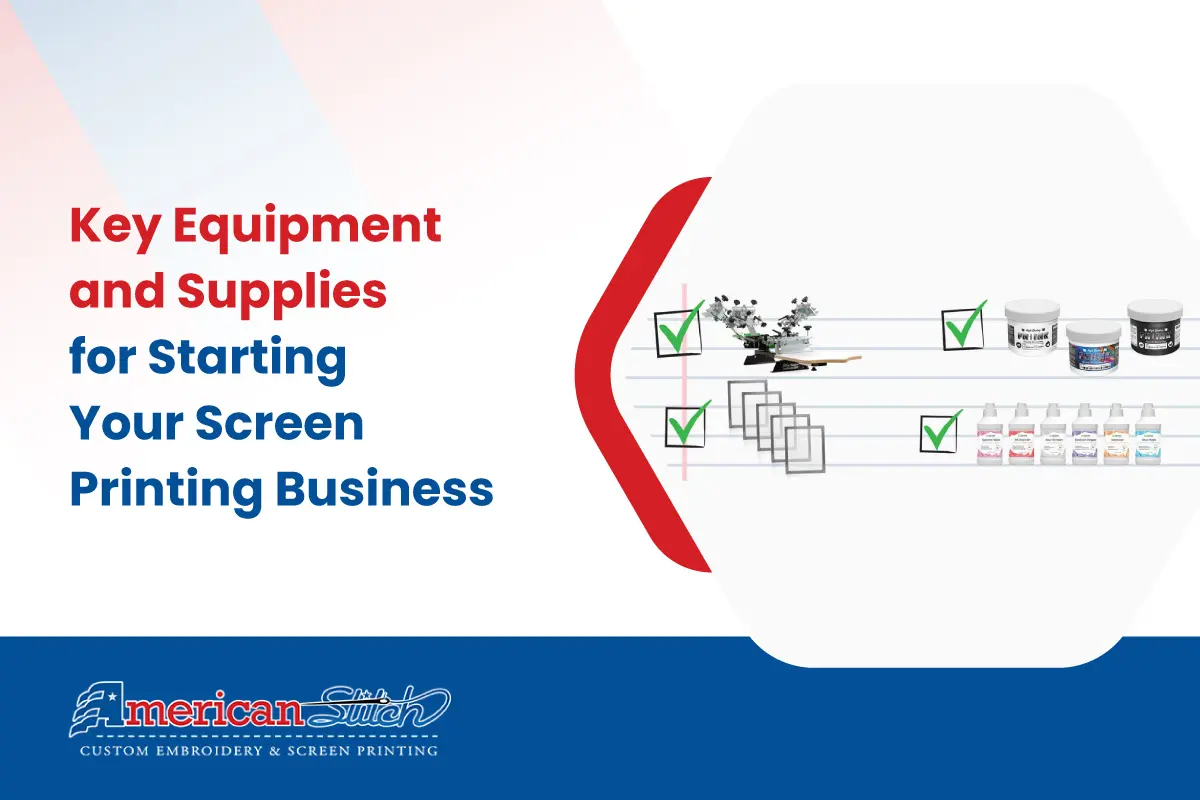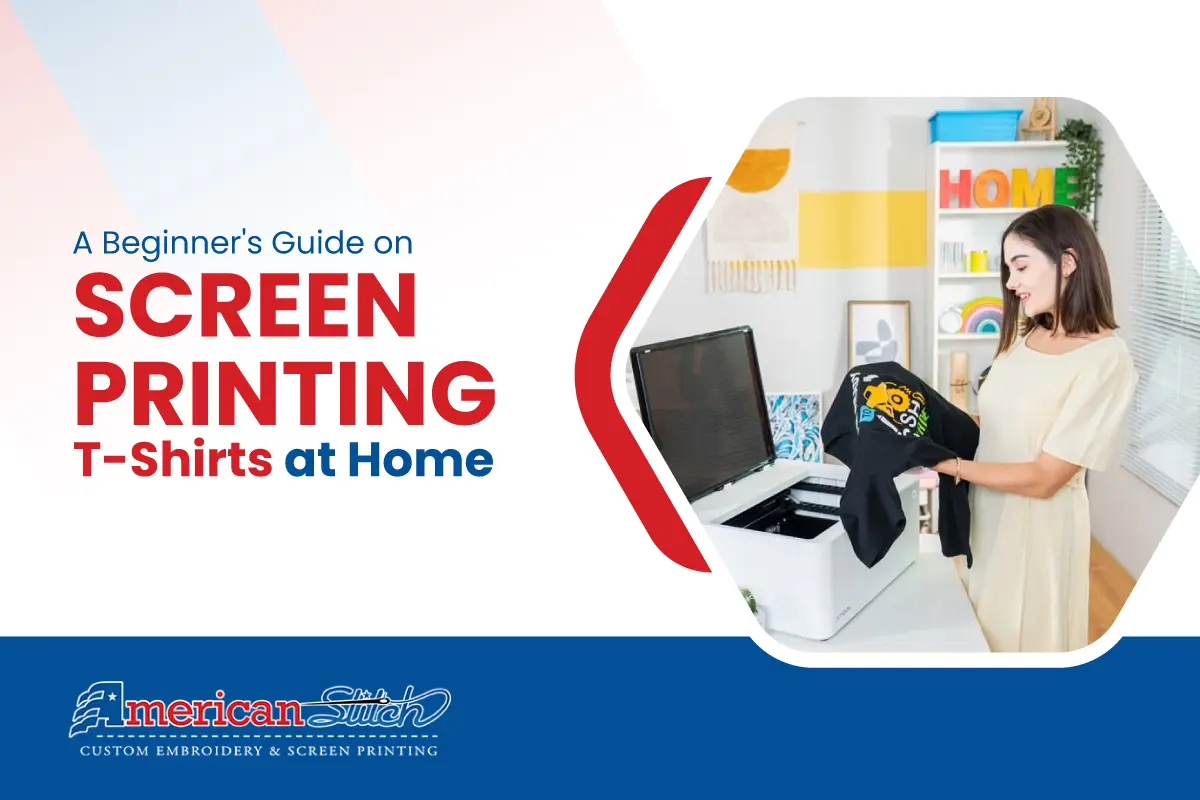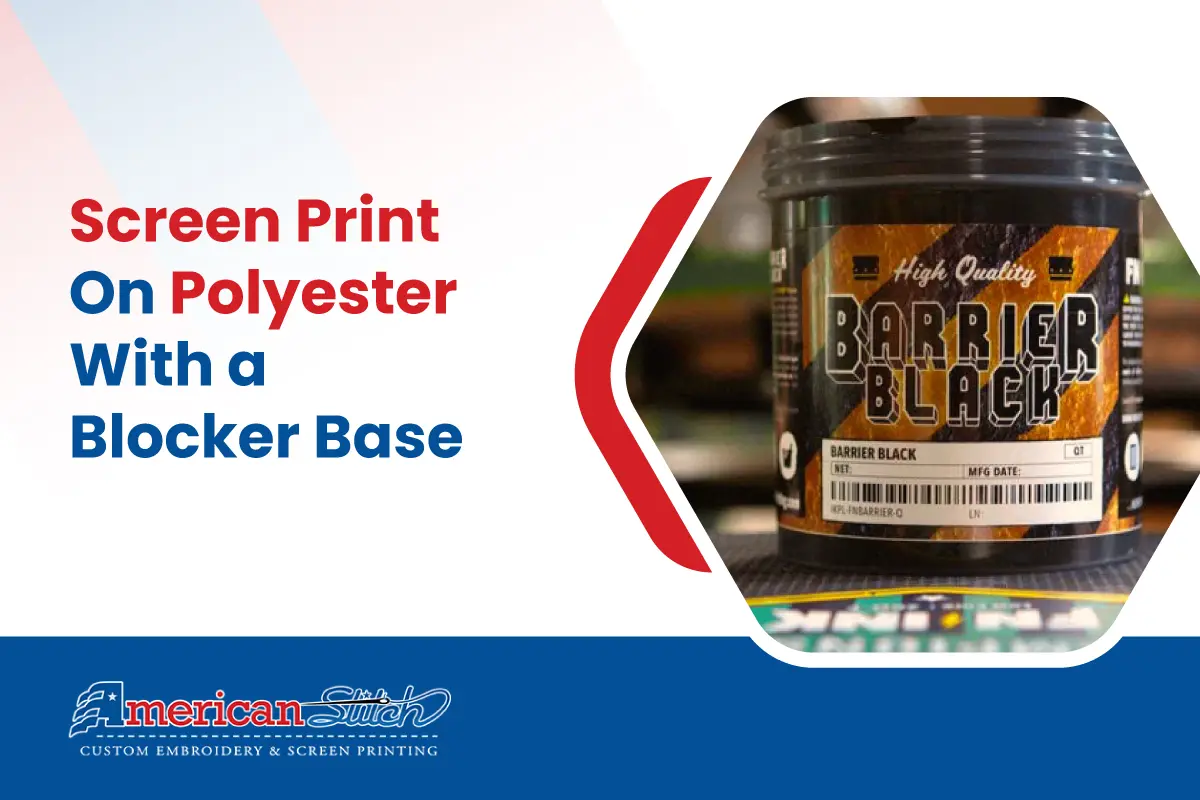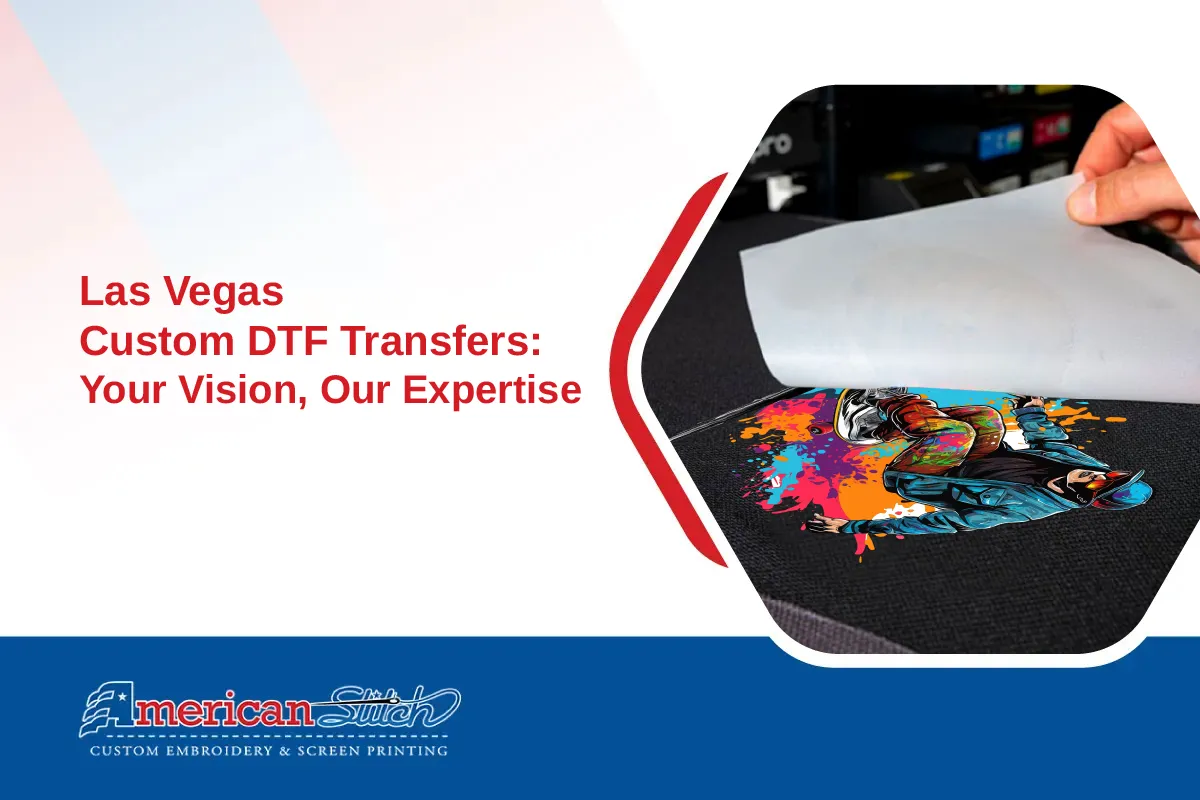Screen printing” is a popular form of printing that is used for a variety of materials. Screen printing involves the use of a stencil, ink, and a mesh screen to create an image. Understanding the cost of screen printing involves understanding the costs associated with the screen, ink, and labor.
Table of Contents
Price Factors of Screen Printing
- Number of Colors: The number of colors used in the design can also impact the cost of screen printing. Each color requires a separate screen, and more colors mean more screens, which can increase the setup cost.
- Number of prints: Typically, the more items you need printed, the lower the cost per item will be. This is because many of the setup costs for screen printing are fixed, so they can be spread out over a larger number of items.
- Quality of the prints: The quality of prints is a crucial factor that can affect the cost of screen printing. Higher-quality prints require more expertise, time, and attention to detail, which can increase the cost of the printing job.
- Type of garment: The type of garment being printed on can affect the cost, as different fabrics and styles may require different printing techniques or inks.
- Print location: The location of the print on the garment can also affect the cost, as printing on different areas may require different setup and printing techniques.
- Design complexity: The complexity of the design can also impact the cost of screen printing. Intricate designs may require more setup time and may also require additional colors or specialty inks.
- Turnaround time: If you need your items printed quickly, you may have to pay a rush fee or expedited shipping, which can increase the overall cost.
Breakdown of the Costs Involved in Screen Printing
- Setup costs: These are the costs associated with preparing the screens, inks, and equipment for the printing job. Setup costs can include the time and labor required to create the screens and set up the printing press, as well as the cost of any special inks or equipment needed for the job.
- Ink costs: The cost of ink is another major factor in screen printing. Different types of ink have different costs, and specialty inks like metallic or glow-in-the-dark can be more expensive than standard inks. The amount of ink used per print can also affect the overall cost.
- Garment costs: The cost of the garment being printed on can also impact the cost of screen printing. Higher-quality garments or specialty fabrics may cost more than basic cotton t-shirts, for example.
- Labor costs: The time and labor required to print each item is also a factor in the cost of screen printing. More complex designs or larger print runs may require more time and labor, which can increase the cost.
- Shipping and handling costs: If you are having your printed items shipped to you or to a third party, shipping and handling costs may also be a factor in the overall cost.
Overall, the cost of screen printing can vary widely depending on the specifics of the job, including the quantity of items, the number of colors in the design, the type of garment being printed on, and the quality of the printing.
By understanding the cost breakdown of screen printing and working with a reputable screen printing provider, you can ensure that you are getting high-quality prints at a fair price.
Screen Printing Equipment and Costs
Screen printing requires specific equipment to transfer the ink onto the garment. Here are the main pieces of equipment needed for screen printing and their associated costs:
- Printing press: A printing press is the primary piece of equipment used in screen printing. It holds the screen and applies the ink to the garment. Manual presses are less expensive and require more manual effort, while automatic presses are more expensive but require less effort and can print larger quantities of items. Manual presses can cost anywhere from a few hundred to a few thousand dollars, while automatic presses can cost several thousand dollars or more.
- Screens: Screens are used to transfer the ink onto the garment. The cost of screens can vary depending on the size and complexity of the design. They typically cost between $20 and $50 each, and may need to be replaced after a certain number of prints.
- Ink: The ink used in screen printing comes in a variety of colors and types, and the cost can vary depending on the specific ink used. Standard plastisol ink is the most commonly used ink and is relatively inexpensive, while specialty inks like metallic or glow-in-the-dark can be more expensive.
- Squeegees: Squeegees are used to apply pressure to the screen and push the ink through onto the garment. They come in a variety of sizes and materials, with prices ranging from a few dollars to several hundred dollars.
- Drying equipment: After the ink is applied to the garment, it must be dried before it can be handled or packaged. Drying equipment can include conveyor dryers or flash dryers, and the cost can range from a few hundred to several thousand dollars depending on the size and type of equipment.
- Other equipment: Other equipment that may be necessary for screen printing includes a light table for exposing screens, emulsion for coating screens, and a washout booth for cleaning screens. The cost of this equipment can vary depending on the specific needs of the screen printing operation.
Overall, the cost of screen printing equipment can vary widely depending on the size and complexity of the operation. By working with a reputable screen printing provider, you can ensure that all necessary equipment is in place and that you are getting a fair price for the job.
Basic T-shirt Screen Printing Prices
The cost of basic T-shirt screen printing can vary depending on a number of factors, including the quantity of shirts being printed, the number of colors in the design, and the quality of the garments being used. However, here are some general price ranges you can expect for basic T-shirt screen printing:
- Quantity: The more shirts you order, the lower the cost per shirt. For example, a run of 50 shirts might cost around $5 to $8 per shirt, while a run of 500 shirts might cost around $2 to $3 per shirt.
- Number of colors: The number of colors in the design can also impact the cost. Each color requires a separate screen and additional setup time, so designs with multiple colors will be more expensive to print. A design with one or two colors might cost around $1 to $2 per shirt, while a design with four or more colors might cost $3 to $5 per shirt.
- Quality of garments: The cost of the garments being used can also impact the overall cost. High-quality, brand-name shirts will cost more than basic, generic T-shirts. The cost per shirt can range from $1 for a basic T-shirt to $20 or more for a high-end designer shirt.
Keep in mind that these are just general price ranges and actual prices may vary depending on the specific job and provider. Additionally, some screen printing providers may charge additional fees for artwork setup or rush orders. Be sure to get a detailed quote from your provider before committing to a job to ensure that you understand all the associated costs.
Tote Bag Screen Printing Prices
The cost of screen printing on tote bags can also vary depending on a number of factors, including the quantity of bags being printed, the number of colors in the design, and the quality of the bags being used. However, here are some general price ranges you can expect for tote bag screen printing:
- Quantity: As with T-shirt screen printing, the more tote bags you order, the lower the cost per bag. For example, a run of 50 tote bags might cost around $3 to $5 per bag, while a run of 500 tote bags might cost around $1 to $2 per bag.
- Number of colors: The number of colors in the design can also impact the cost. Each color requires a separate screen and additional setup time, so designs with multiple colors will be more expensive to print. A design with one or two colors might cost around $1 to $2 per bag, while a design with four or more colors might cost $3 to $5 per bag.
- Quality of bags: The cost of the bags being used can also impact the overall cost. High-quality, durable bags will cost more than basic, inexpensive tote bags. The cost per bag can range from $1 for a basic tote bag to $10 or more for a high-end designer bag.
- Bag material: The material of the tote bag can also affect the cost. Cotton or canvas bags are typically less expensive to print on than materials like polyester or nylon.
It’s important to note that these are just general price ranges and actual prices may vary depending on the specific job and provider. Some screen printing providers may also charge additional fees for artwork setup or rush orders. Be sure to get a detailed quote from your provider before committing to a job to ensure that you understand all the associated costs.
Double-Sided Screen Printing Cost
Double-sided screen printing involves printing a design on both sides of a garment or item. The cost of double-sided screen printing will typically be higher than single-sided printing due to the additional setup time and materials required. Here are some factors that can impact the cost of double-sided screen printing:
- Quantity: As with single-sided printing, the more items you order, the lower the cost per item. However, with double-sided printing, you’ll be paying for twice as much printing per item.
- Number of colors: The number of colors in the design on each side of the garment will impact the cost, as each color requires a separate screen and additional setup time. A design with one or two colors on each side might cost around $3 to $5 per item, while a design with four or more colors on each side might cost $7 to $10 per item.
- Quality of garments: The quality of the garments being used can also impact the overall cost. High-quality, brand-name garments will cost more than basic, generic items.
- Location of printing: The location of the printing on the garment can also affect the cost. Printing on certain areas, such as sleeves or the sides of a garment, may require additional setup and labor time, which can increase the cost.
Again, these are just general price ranges and actual prices may vary depending on the specific job and provider. Some screen printing providers may also charge additional fees for artwork setup or rush orders. Be sure to get a detailed quote from your provider before committing to a job to ensure that you understand all the associated costs.
Bottom Line
Screen printing costs can vary widely depending on a number of factors, including the quantity of items being printed, the number of colors in the design, the quality of the garments or items being used, and the complexity of the printing process.
It’s important to work with a reputable and experienced screen printing provider who can provide a detailed quote and help you understand all the associated costs.
By understanding the cost breakdown of screen printing and considering these factors, you can make informed decisions about your screen printing projects and ensure that you get high-quality results at a fair price.
Frequently Asked Questions
Why is screen printing so expensive?
Screen printing can sometimes be more expensive than other printing methods because it is a labor-intensive process that requires specialized equipment and materials. Here are a few reasons why screen printing can be more expensive: 1. Setup Costs, 2. Labor Costs, 3. Materials, and 4. Customization. Let’s dive in more detail to each of these reasons.
Setup costs: Setting up screens, mixing inks, and preparing garments or other items for printing requires a significant amount of time and effort. This setup time is factored into the overall cost of the job, which can make screen printing more expensive than other printing methods for small runs or simple designs.
Labor costs: Screen printing is a manual process that requires skilled labor. Each item needs to be loaded onto the printing press, aligned properly, and then printed by hand. This can take a significant amount of time, particularly for multi-color designs or items with complex printing requirements.
Materials: Screen printing requires specialized equipment, including screens, inks, and presses. These materials can be more expensive than those used in other printing methods. Additionally, the cost of the garments or items being printed on can impact the overall cost of the job.
Customization: Screen printing offers a high level of customization, which can make it more expensive than other printing methods. Each color in the design requires a separate screen, and each item needs to be printed individually. This level of customization is not always necessary or desirable for certain types of printing projects.
It’s worth noting that while screen printing can be more expensive than other printing methods, it also offers a number of advantages, including vibrant colors, durability, and the ability to print on a wide variety of materials. Ultimately, the cost of screen printing will depend on a number of factors, including the complexity of the job, the quantity of items being printed, and the provider you choose to work with.
Is digital printing more expensive than screen printing?
Digital printing and screen printing have different cost structures, and the cost of each method can vary depending on a number of factors. In general, digital printing is often more cost-effective for small runs or designs with multiple colors, while screen printing can be more cost-effective for larger runs or designs with fewer colors.
Digital printing is a more automated process that uses a digital file to print designs directly onto the garment or item. This means that there is little to no setup time or cost involved, making it more cost-effective for small runs or designs with multiple colors. Additionally, digital printing allows for greater detail and can reproduce photographic images accurately.
Screen printing, on the other hand, is a more manual process that involves setting up screens and printing each color separately. This makes it more time-consuming and labor-intensive, which can make it more expensive for small runs or designs with multiple colors. However, for larger runs, screen printing can be more cost-effective, as the setup costs are spread out over a larger quantity of items.
Ultimately, the cost of digital printing versus screen printing will depend on a number of factors, including the quantity of items being printed, the number of colors in the design, and the provider you choose to work with. It’s important to get a detailed quote from your provider and consider all the associated costs before deciding which method to use.

